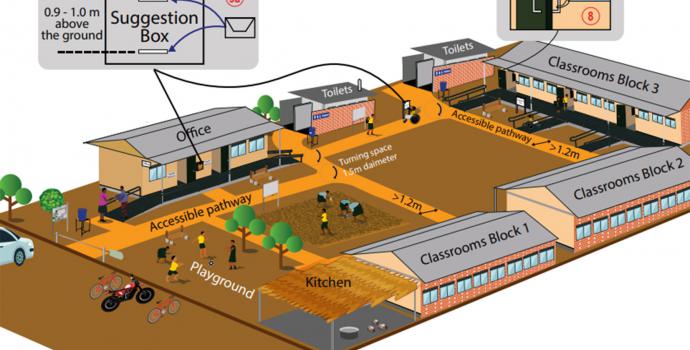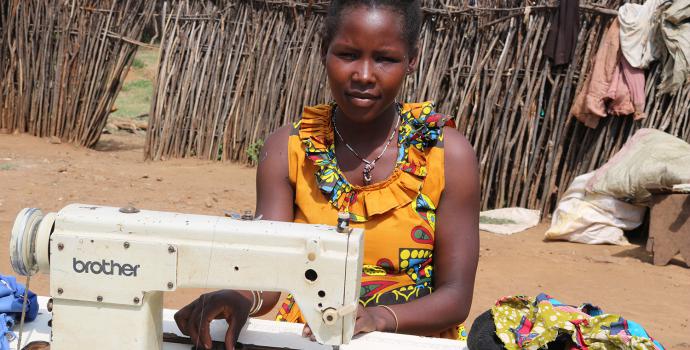Tackling Africa's biggest refugee education crisis

The bell for class rings and 200 children clamber over each other to try and find a place to sit.
Those who can’t find a place on the benches peer in through the open windows, trying to hear the teacher speak in a language they barely understood when they arrived.
Refugee children here in northern Uganda are desperate to learn, but it can be a daily struggle.
Uganda hosts by far the most refugees in Africa. It has provided a sanctuary for people fleeing some of the world’s most brutal conflicts in South Sudan and eastern DR Congo, and more people continue to arrive every day – 60 percent of them children.
They arrive in some of the poorest and least developed districts of Uganda, and the huge influx has put severe strain on already limited services. Schools especially are struggling to cope.
At least 57 percent of refugee children in Uganda are out of school. In the local host communities – which are often forgotten in refugee crises – more than a third of Ugandan children are also out of school.
There are numerous reasons why children here drop out of education. There are too few schools and learners often have to walk miles to and from class, sometimes exposing them to danger. Many children have to go and find paid work to support their impoverished families, while an estimated 5 percent of refugee children in Uganda are on their own, separated from their parents. There are high rates of teenage pregnancy and early marriage, while schools often don’t have suitable facilities for children with disabilities. Refugee children often have to leave school when conflict erupts and they flee for safety – months later in a new country it can be hard to get back to school.
A crisis of this scale requires a new approach.
That’s why Save the Children has been working closely with the Ugandan government, UN agencies and other humanitarian partners to develop Uganda’s new Education Response Plan (ERP) for refugees and host communities – the first of its kind worldwide.
It’s a three and a half year rolling plan that brings together all education work going on in the humanitarian response in a coordinated way. Led by the government, it aims to shift from a mainly emergency focus to a more sustainable, integrated approach that addresses immediate humanitarian needs as well as longer-term investment towards recovery and development.
It covers actions from constructing new classrooms, training teachers and providing textbooks, to strengthening education polices, piloting innovative new ways of learning, and providing vocational skills training. Save the Children’s education work in Uganda matches the Plan – for example through our accelerated education programmes which help children who have missed years of schooling by teaching a specially adapted primary curriculum in just three years.
The Plan launched this month and presents a golden opportunity to provide hundreds of thousands of children with a better future. It could provide quality learning to more than 500,000 children a year… if the international community acts to fund it.
Uganda is a test case for the world’s response to the unprecedented global movement of refugees, which to date has been woefully inadequate. International governments have made firm commitments – for example, through the 2016 New York Declaration for Refugees and Migrants, and the Global Compact for Refugees – to share responsibility for dealing with the crisis.
But in Uganda we see little evidence of this.
On the one hand, the Ugandan government has shown a progressive policy towards refugees, allocating them land and the right to work, freedom of movement and access to the same services as nationals. Uganda is playing a crucial pilot role in the Comprehensive Refugee Response Framework (CRRF), which was adopted by all 193 UN Member States, to better integrate humanitarian action into wider strategies for recovery and rebuilding.
Local communities have also generously shared land and services with the new arrivals.
However, the level of international support has fallen well short of what’s needed – the refugee response has received less than 20 percent of funding needed in 2018.
Education is one of the worst funded sectors. Schools are crumbling because there is no money to repair them, while newly-built learning centres for new arrivals remain closed as there are no funds to pay teachers.
The launch of Uganda’s ERP is an opportunity to change this and turn these global commitments into action. Other countries that are hosting large numbers of refugees, or may do in future, are watching how the world responds to Uganda’s request for support.
What happens next in Uganda will determine the whole international framework for refugee crises. It’s imperative that donors provide the funding needed to make this Plan a reality.




